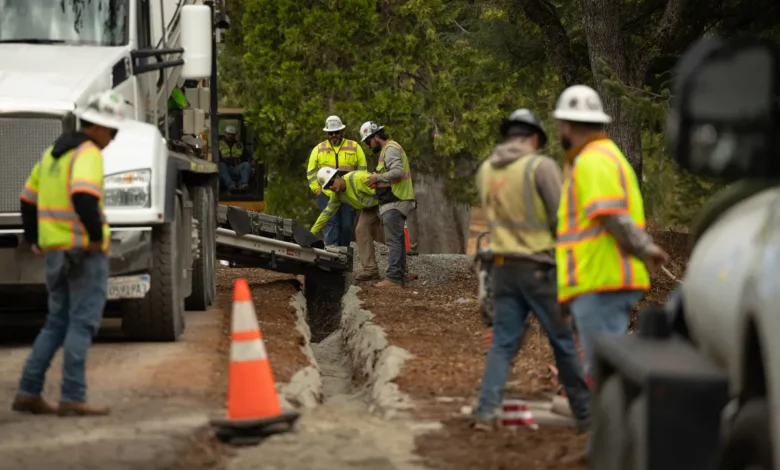Powering the Unreachable: Installing Utilities in Off-Road Locations

In our connected world, access to electricity and utilities is often taken for granted. Yet, for those living, working, or adventuring in off-road and remote locations, powering up is far from simple. Whether it’s a cabin in the woods, a mining site, a construction project, or a recreational facility off the beaten path, installing utilities in these challenging environments requires careful planning, specialized equipment, and creative problem-solving.
This article explores the unique challenges of bringing utilities to hard-to-reach places and highlights practical strategies to ensure reliable power and utility installation in off-road settings.
The Challenges of Remote Utility Installation
Unlike urban or suburban areas where utility lines, access roads, and infrastructure are already in place, off-road locations present distinct hurdles:
- Terrain Obstacles: Mountains, forests, rivers, and rocky landscapes can make transporting equipment and materials difficult.
- Accessibility Issues: Narrow trails, unpaved roads, or even a complete lack of pathways can complicate logistics.
- Environmental Considerations: Projects often require minimizing impact on sensitive ecosystems, adhering to environmental regulations, and avoiding disruption to wildlife habitats.
- Weather Conditions: Harsh climates—from snow-packed regions to sweltering deserts—affect both the installation process and long-term utility performance.
- Cost and Resources: Remote projects typically require more time, labor, and financial investment due to transportation challenges and specialized equipment.
Choosing the Right Power Source
One of the first steps in powering an off-road site is deciding how the energy will be generated and distributed. Options include:
- Grid Extension: If the location isn’t too far from existing power infrastructure, extending grid lines may be feasible, though often costly.
- Generators: Diesel or gas generators provide a quick solution, particularly for temporary sites, but they require regular fuel supply and maintenance.
- Renewable Energy Systems: Solar panels, wind turbines, and even micro-hydro systems are increasingly popular for remote installations. These solutions can reduce long-term costs and environmental impact, though they require careful design to match local conditions.
- Hybrid Systems: Combining renewables with generators or battery storage can ensure consistent and reliable power in unpredictable environments.
Utility Delivery Beyond Electricity
While power is often the most urgent utility need, off-road sites may also require water, sewage, and communication lines. Each of these presents its own challenges:
- Water Supply: Options include drilling wells, installing rainwater collection systems, or transporting water from nearby sources.
- Waste Management: Septic systems or composting toilets are commonly used when conventional sewage connections aren’t possible.
- Connectivity: With the rise of satellite internet and communication solutions, staying connected in remote areas is easier than ever, but still requires careful equipment placement for reliable signals.
Tools and Techniques for the Job
Bringing utilities to remote and rugged locations calls for a specialized set of equipment and strategies:
- All-Terrain Vehicles (ATVs) and Utility Task Vehicles (UTVs) to move materials, gear, and crews across uneven landscapes.
- Helicopters and Drones for aerial surveys and, when necessary, lifting supplies or components into otherwise inaccessible spots.
- Rough Terrain Cranes—especially vital in areas like Utah with rocky, uneven ground—provide the lifting power needed to place heavy poles, transformers, or utility structures where traditional cranes can’t operate.
- Portable Power Equipment such as lightweight drilling rigs, trenchers, and mobile generators that can be transported to hard-to-reach job sites.
- Temporary Access Roads, often built with gravel, mats, or other stabilizing materials, to enable heavy machinery to travel without causing long-term damage to the surrounding environment.
Beyond equipment, successful off-road projects depend on experienced crews—teams trained not only in utility installation but also in navigating wilderness conditions safely and efficiently.
Sustainability and Long-Term Performance
In today’s world, installing utilities isn’t just about getting the job done—it’s about doing it responsibly and sustainably. For remote locations, this often means prioritizing low-maintenance, eco-friendly systems. For example:
- Designing solar or wind setups with battery storage to minimize fuel dependence.
- Using insulated and weather-resistant equipment to withstand extreme conditions.
- Implementing erosion control and vegetation restoration after installation to preserve the natural landscape.
Long-term monitoring and maintenance are also essential. Remote monitoring technologies, such as smart sensors and IoT systems, now allow utility providers and owners to track performance and detect issues without frequent site visits.
Planning for Success
Every off-road utility project begins with comprehensive planning. Key steps include:
- Site Assessment – Evaluating terrain, weather, and environmental concerns.
- Feasibility Study – Comparing power options and utility delivery methods for cost, efficiency, and sustainability.
- Permitting and Regulations – Ensuring compliance with local, state, or federal laws, particularly regarding environmental protection.
- Logistical Planning – Mapping out transportation routes, equipment needs, and workforce accommodations.
- Implementation and Maintenance Strategy – Building with durability in mind and ensuring a plan for upkeep.
Final Thoughts
Installing utilities in off-road locations is no small feat. It requires blending technical expertise with creativity, resilience, and respect for the environment. By choosing the right power sources, leveraging modern technology, and planning thoroughly, it’s possible to light up even the most unreachable destinations.
From powering remote work sites to energizing wilderness getaways, utility installation off the beaten path proves that with the right approach, no location is truly out of reach.




